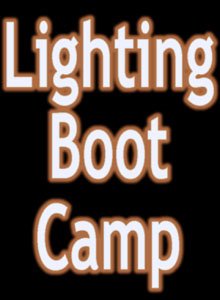Boot Camp Assignment #5: View with a Room
 As summer (or winter, for you southern hemisphere folks) draws to a close, we find ourselves at the next-to-last Boot Camp assignment.
As summer (or winter, for you southern hemisphere folks) draws to a close, we find ourselves at the next-to-last Boot Camp assignment.And you'll be pleased to know that this one will not require you to scrounge another model.
You'll be shooting a room.
First reaction: Why?
Second reaction: How in the Sam Hill do I shoot a room with one or two small flashes?
Well, I'll tell you why and how.
Lighting a room is an exercise in working with flash vs. the ambient. Since you cannot overpower the ambient on a scale like this with one small light, you'll need to work with it.
Not only that, but you'll need to work close to the ambient, if you want your photo to have any subtlety or elegance.
Photographers generally have specialties, if they reach any level of success. They can specialize in a genre (portraits, sports, etc.) or a style (slick light, artsy B&W, mangled Polaroids) or in any number of different ways.
So far, Phil Phlashen has been a People Person, who also grabbed a quick $10k by parlaying his flavor-of-the-day into a snazzy water shot.
But being a People Person also means having to know how to create an environmental portrait.
And to create a good environmental portrait, you have to be able to come up with a good environment. Which is why this assignment will veer into somewhat of an architectural photography direction.
Here are some guidelines to consider when shooting a room.
First, you'll want to keep your vertical lines vertical. Sure, there are exceptions. But for the most part, architectural guys (and gals) like to keep their lines correct.
How to do this? Well, you could use a view camera. But I suspect that is out of the question for most of you.
You could correct the lines in Photoshop. (Strictly for weenies in this case.)
Or you could make sure that your camera is pointed very, very close to horizontal when you shoot the photo. This will be your most likely solution.
As you might guess, this horizontal shooting requirement will affect camera placement in a very big way. You are used to walking around to find the best angle. Just be sure to consider the "Z" axis (the camera height) when you compose for this assignment.
Shooting a room is all about lines and light. Take shooting position into account (and use a tripod to nail down that variable) and you are halfway home.
Which leaves the light.
"All I have is an SB-24! I only have one light source!" You might whine.
Tungsten (or, if you are evolved, CFL) lamps will be your most obvious contributor. You might want to re-read the Lighting 101 posts on balancing strobe and ambient. Ditto the piece on gels. But you do not necessarily have to color correct to get a cool-looking mix-light shot. And since you are shooting a whole room, you'll most likely consider the ambient as your main source and either fill or accent something with strobe(s).
But what about the light streaming in through the windows? I can't overpower (or even balance) that with my dinky flash!
Well, Hoss, I have made specific arrangements to ensure that the world will continue to rotate on its axis for at least the duration of this assignment. (After that, you are on your own.) So you will be provided with drastically varying exterior light levels coming through the windows at various times of the day/twilight/night.
If the room has a neat exterior environment, I would strongly suggest taking advantage of this in your photo.
Again, balance is the key.
So, you have three variables to control: Continuous room lighting, exterior light levels and strobe.
You know how to control them all using aperture, shutter speed, patience for the right time of day, etc.
If not, better get reading in Lighting 101.
Here's the assignment, followed by tags and a couple of hints:
To: Phil Phlashen
Assignment: Need interior of someplace in your town to illustrate a story on local area. Can be public or private. Completely your choice. Can be vertical or horizontal. Please shoot in color.
Photo could run full-page or double truck, so make sure it'll hold up.
Deadline: 11:59pm local time, Sept 5th, 2006.
Tags:
• strobistbootcamp
• room
• [pro or amateur]
• [your country]
Hints:
1. Time of day will be critical to the success or failure of the shot. Make sure you can contain the exterior light level and put it where you want it.
2. A strobe can sometimes make a nice accent light by firing through a door from an adjoining room.
3. You do not have to be inside a room to photograph it well. You do not even have to be inside the building. Using windows as frames works on both directions.
4. Work close to the ambient with your strobe. I cannot stress this enough. The elegance (or lack thereof) of your photo will be determined by how well you balance the light sources.
And just to be clear: Please use at least one strobe in lighting your photo. If the flash's effect is not obvious, please explain how and where it is being used in your Flickr description.
Rants? Raves? Whines? Complaints? Demands of refunds?
Talk about it here.
Lighting Boot Camp is sponsored by Midwest Photo Exchange.

__________
New to Strobist? Start here | Or jump right to Lighting 101
My new book: The Traveling Photograher's Manifesto
Permalink
<< Home